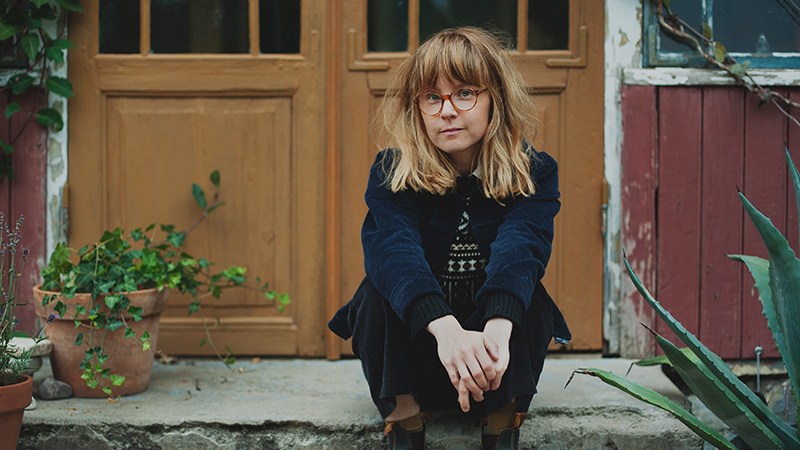Emma Adbåge

Rationale
In Emma Adbåges Naturen (“The Nature”, not translated into English) the people of a small village go from loving nature to feeling frustrated about it. Nature refuses to behave the way the people want, even though they grow tagetes, lay asphalt, cut down the large linden tree, and grill a flank steak on a fire made with its wood.
Adbåge demonstrates her mastery of one of the most difficult of literary art forms, satire, and her perceptive wit and perfect timing leave us stifling our laughter. At the same time, children are clearly Adbåge’s audience and she lets them have a good laugh at the adults’ vanity and their unwillingness to adapt to nature.
The seasons are rendered by phrases that many of us have probably used to describe how we love autumn and the beautiful leaves, the joy of tobogganing in the winter, spring with its fresh scents, and summer with the sun and swimming. But what happens when the leaves turn brown, when the snow becomes too deep, when there’s too much gardening to do, and the sun becomes too hot?
Adbåge’s illustrations show brilliantly how people attempt in vain to tame nature. Nature is colour and is made up of large, powerful creations. It is at the centre of every spread, ever present but ever changing. The people are relegated to being drawn on top of it, in narrow, shaky pencil lines. Adbåge uses perspective to convey the skewed nature of our irrational behaviour. Although there is some harmony at the beginning, with each turn the story becomes more and more distorted. The figures of the adults are very elongated and meander over the spreads in a disorderly crowd. The children, who are portrayed as more proper, do the best they can to keep up. When order is finally restored and nature has had its say, the perspectives are corrected.
Adbåge’s work is more than just a satire; it has something to say about the climate crisis and the important role of the human factor. She does this without pamphletising, however, and presents us with a hall of mirrors instead, where people can see how laughably small they are in the face of nature’s might.